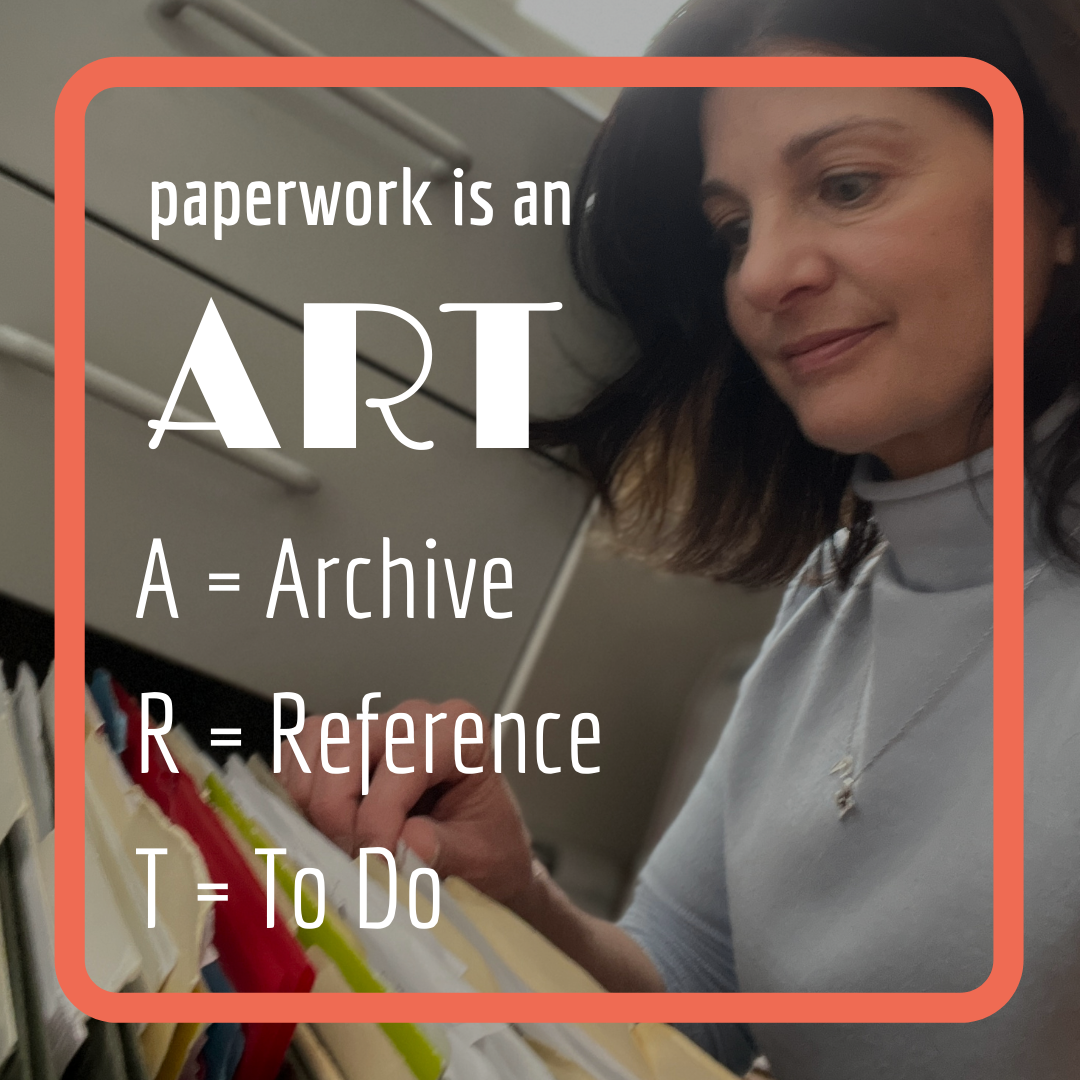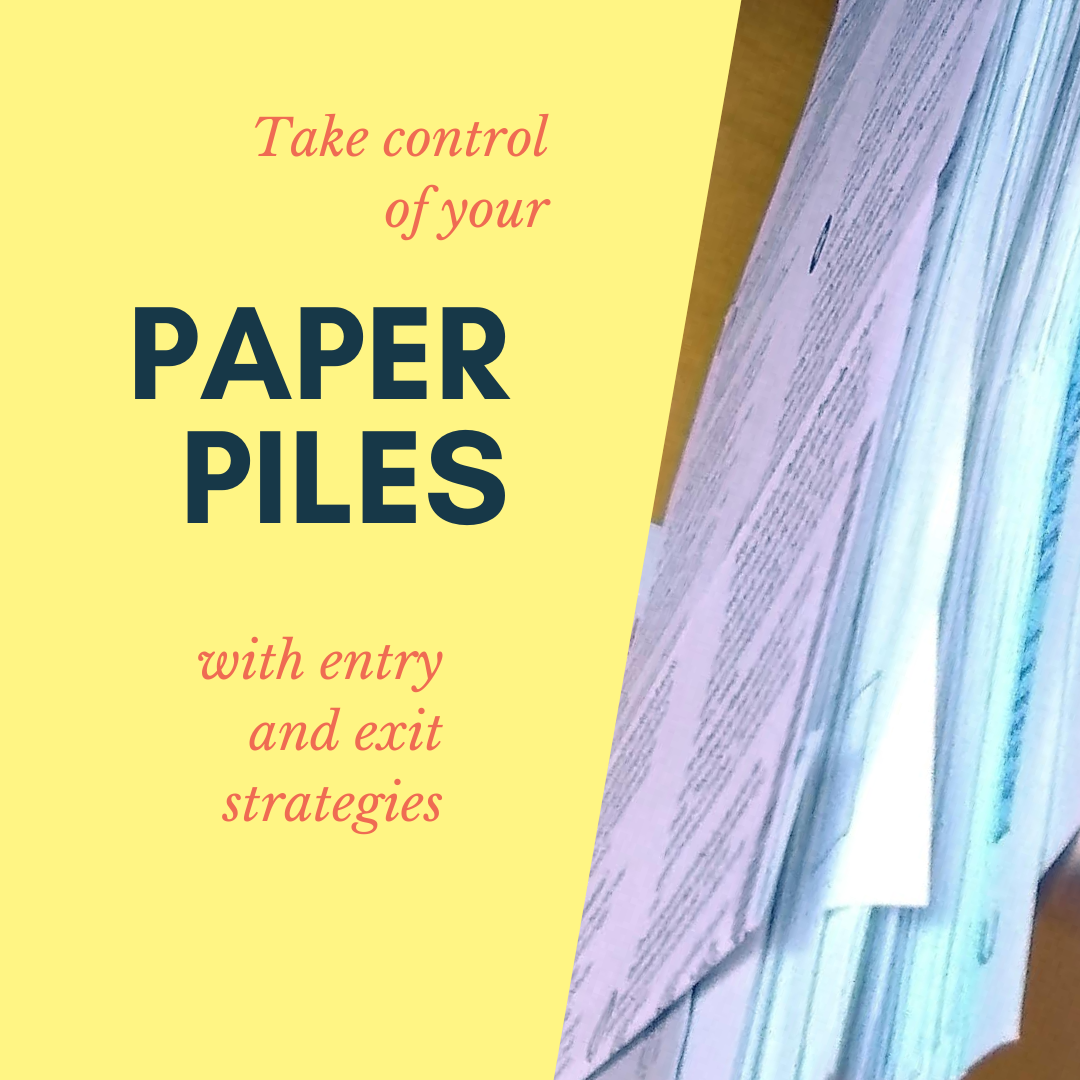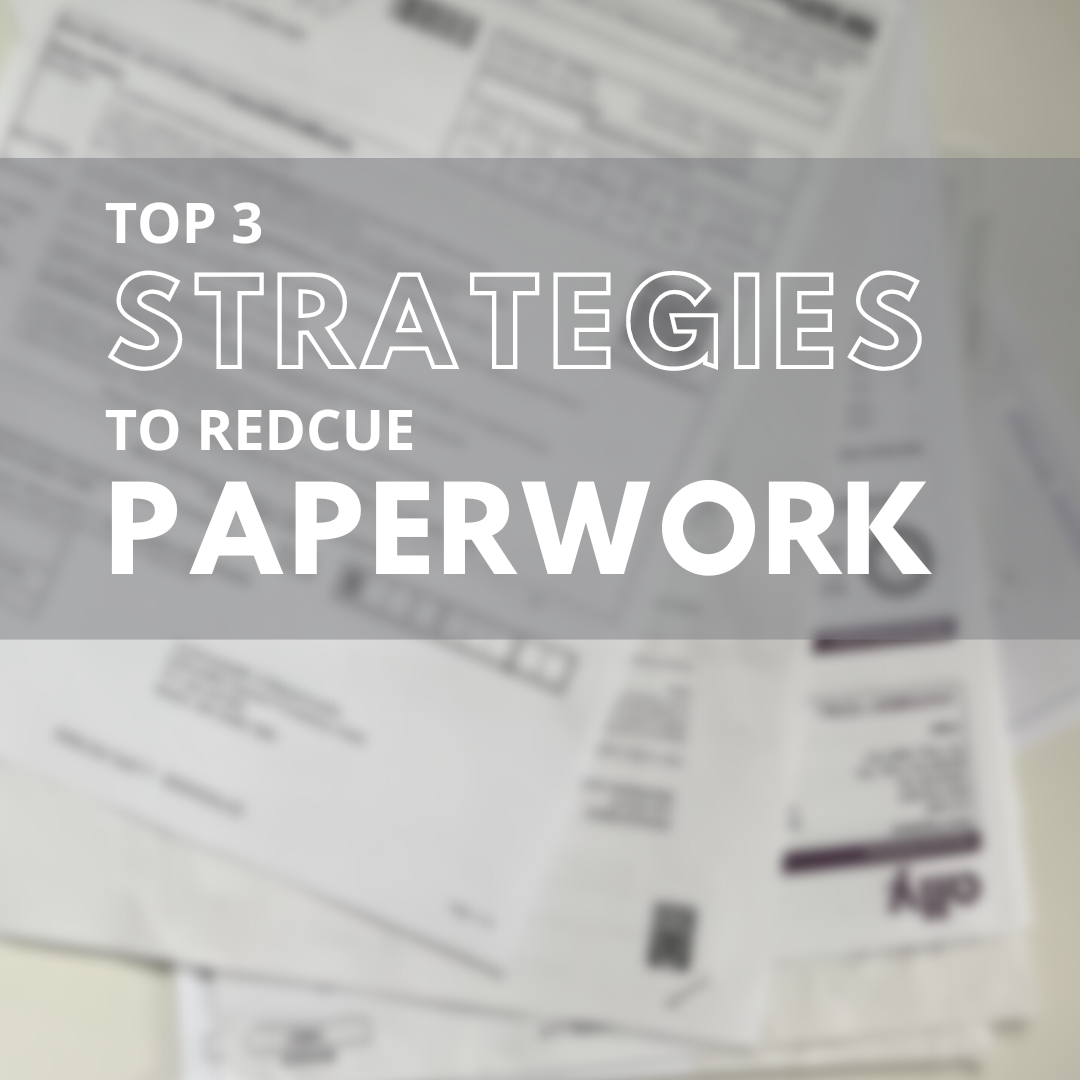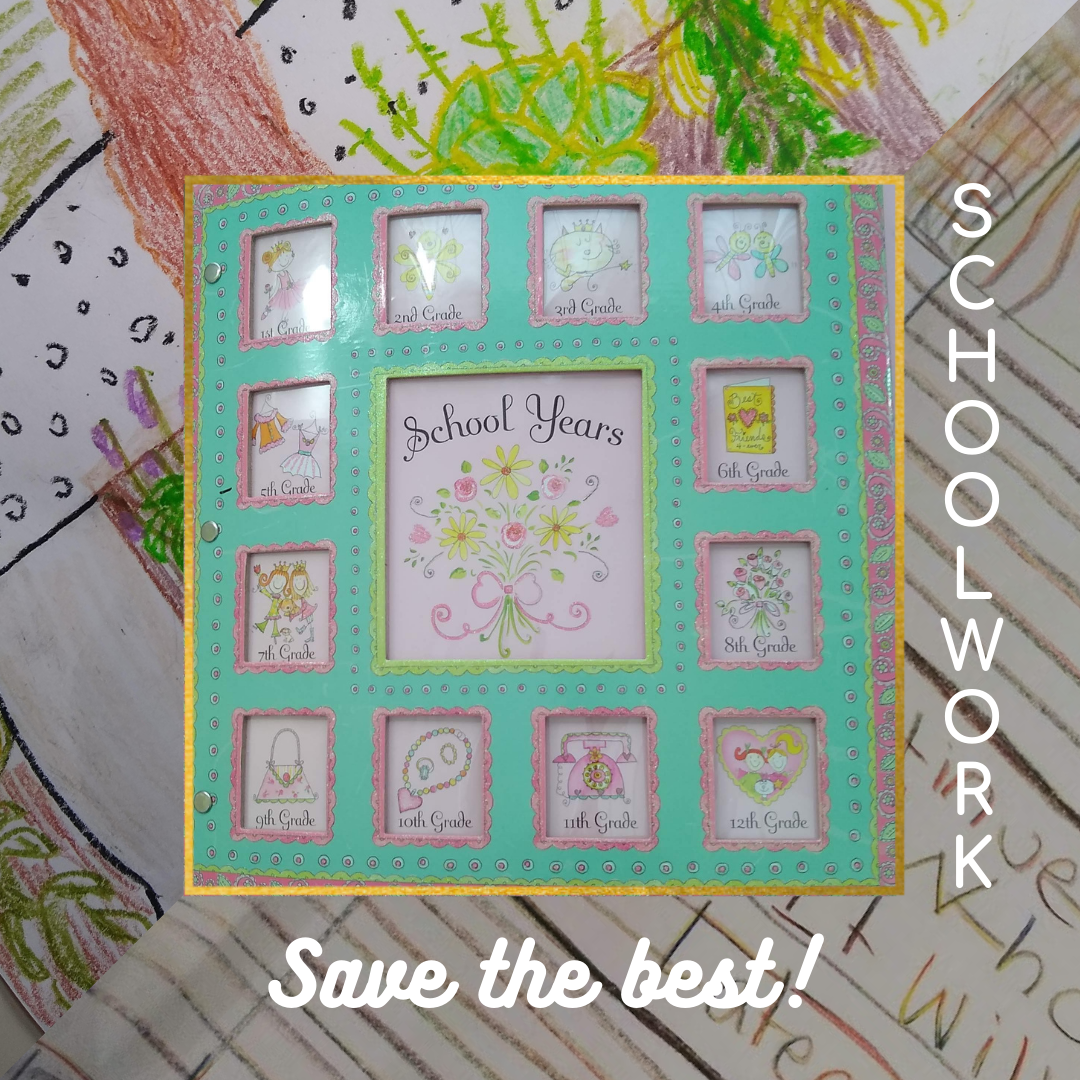|
Where in the world is my high school diploma? I know I graduated but I don’t think I’ve seen that piece of paper in the 30 years since. I never thought I’d need it again!!!
This was my panicked thought process two years ago when I needed that diploma—and my college one—to prove that I was eligible to sit for the Certified Professional Organizer exam. A professional organizer who can’t find her own vital records—I felt like a fraud! Thankfully, both diplomas were still in my mother’s house right where I stashed them after graduation. Now I have them in my paperwork system and can grab them at a moment’s notice. In this blog, I’ll help you set up your own simple paperwork system. ART: My Simple Paperwork System The biggest hurdle is knowing what to do with all the various papers (both physical and digital) that find their way into our homes. Do I have to do something with this? Do I need to keep this? How long do I have to keep it? Every paper coming into your home can fit into one of three categories: Archive, Reference, or To Do. ART! A = Archive R = Reference T = To Do
0 Comments
Paperwork, filing, taxes -- there must be some people who enjoy dealing with these, right? I’m not one of them and I suspect you aren’t either. Unfortunately, with tax day coming up next month, piles of paper are a reality for many of us.
What are the top causes of this paper pileup?
What are the solutions to these problems?
Paperwork, specifically incoming mail, is a top complaint of my organizing clients. Why do we get so much junk mail?! It takes time and effort to process, and we end up tossing most of it.
In my blog about strategies to reduce paperwork, I detail some steps you can take to get rid of incoming junk, but today I want to help you get rid of the junkiest of junk mail. Supermarket Circulars: the junk mail bane of my existence! I hate getting those newsprint flyers. They go straight from my mail slot into my recycling bin. What a colossal waste! Have you been diligently slogging through your paperwork this month? Have you gathered together the tax info, submitted and received forms, shredded outdated information, and created a filing system that you can maintain going forward?
If so, good job! If not, check out my last blog for a helpful framework on the ART of filing. Most likely, one of the reasons you struggle with paperwork is because you are just inundated with too much of it. Despite the fact that we live in the digital age, physical paper still abounds. Here are the three best strategies to reduce it. MyOrganized.life by Smead makes some of the best products for organizing your office, home office, and—really—your life!
Some of my favorites are:
Head to Smead's site, www.myorganized.life and see all the great products they have for making paper organizing fun! The calendar just rolled over to a new year, so it's time to start fresh with some new files. This goes for you whether you're mostly digital, mostly paper, or somewhere in the middle.
If you keep digital files, I recommend downloading pdf copies of the statements as a backup and keeping them in folders on your computer and backed up on a cloud server (I use dropbox, but there are many good options out there.). Now is the time to create new folders labeled with the new year so you'll be ready when this year's downloads are available. If you keep paper files, now is the time to label some fresh new folders. If you have a file drawer, one good option is to keep two-year's worth of files available at a time so you can just rotate the files for the new year. One set of files will be labeled "odd" for odd years, and the other "even." When the new year rolls around, bring the new year's set of files to the front of the drawer, emptying them out by discarding anything no longer need to store and placing items for long-term storage (Check the IRS website for a reference list.) in an archive file location such as a less-accessible file drawer or a box in a closet, attic, or basement (Use plastic bins if moisture is a problem.). Another option for paper files is my expanding file system. Each year, I start fresh with a new 19-pocket expanding file. For the first part of the year, while I'm preparing for taxes, I keep last year's file handy. After April 15th, it goes down to my basement on a shelf with 7 others. I store 7 years' worth of files (that's how long to save tax-related info) plus one expanding file for permanent information (tax returns, home repairs, major medical info, etc.). I like this system because it's easy, compact, and never has to be purged. After 7 years, the files get shredded and I can reuse the expanding file. How will you make a fresh start with files this year? Looking for an easy way to reduce the dreaded task of filing? Go paperless!
Whenever possible, whether it's utility bills or bank statements, sign up for the paperless option. Don't worry, your statements and account information will all be available to you online, but you'll no longer have to handle and store the paper files. You'll still be able to reconcile your bank statements and keep track of payments because the statements will come to your email address. If you really feel the need, you can file these digitally in a special email folder. At least that kind of filing takes just a click and doesn't take up any physical space. Want to streamline things even further? Sign up for automatic payments of recurring bills. You'll be given at least several days' notice about exactly how much will be deducted from your bank account or charged to your credit card, so you have time to transfer the funds as needed. You'll never be late on a payment again! Way back in the fall, I wrote about how to set up a system to deal with all those pesky papers that come home from school.
The basic weekly system is this: 1. Immediately deal with any notifications (add to calendar, write a check, sign a form). 2. Recycle anything not worth saving (worksheets, scribbles, spelling tests, coloring pages). 3. Display this week’s artwork and accomplishments in your temporary display space (fridge, frame, bulletin board, clothesline strung across a window). 4. Stash last week’s displayed work in an art portfolio or other bin.* *This is the time to weed out anything that, after one week’s display, can be recycled. Try to save only the best items, such as the unusually detailed drawing, the very clever essay, or the spelling/math test that was a true victory. Now that you’ve been diligently checking the backpack every week and keeping up with all the papers, what do you do with the stash that has accumulated in the portfolio? That’s what we’ll tackle today! Need to organize a desk, vanity, or other shallow drawer? You could spend a lot of money on fancy-looking organizers or spend a lot of time devising a custom-organizer box plan, but how much work does organizing a messy drawer really need to be?
I like these simple, plastic drawer organizers from the Container Store. They cost only $5.99 for the small size and $7.99 for the large and are pre-sectioned to hold items of varying size and have a sliding top section that can hold items you frequently need to grab. Another plus is that they are smooth plastic with rounded corners so they are easy to clean. With other drawer organizers, I often find that they don’t have the right type of sections for the job – too many small sections or too many large sections or just not the right mix. These organizers seem to have just what I need for so many different organizing tasks: makeup, skincare products, medicine, first aid supplies, arts and crafts tools, etc. Catalogs and magazines can be fun to browse through every now and then, but this innocent-seeming form of entertainment can have cluttering consequences for your home and your mind.
Here’s a list of reasons why I recommend reducing or eliminating your consumption of catalogs and magazines:
|
Categories
All
Archives
July 2024
|
|
Copyright © 2024 Kate Bosch Professional Organizing LLC
|
Providence, Rhode Island | 401-699-4878
|






 RSS Feed
RSS Feed